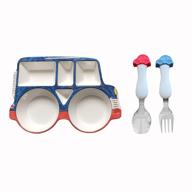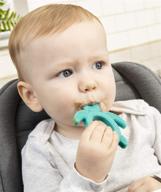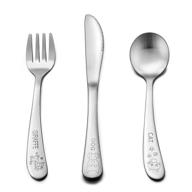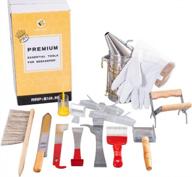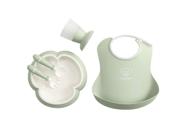Storing Homemade Baby Food in Silipods
Making your own homemade baby food is a great way to provide your little one with healthy, nutritious meals. But proper storage is key to keeping those homemade purées and smoothies fresh. Silipods are an excellent option for storing homemade baby food.
Prep the Containers
Before storing any food in the Silipods, make sure to wash the containers and lids in hot, soapy water. This removes any residues from manufacturing or shipping. Rinse thoroughly and allow to air dry.
Portion Sizes
When portioning out homemade baby food in Silipods, keep in mind:
- Babies 6-8 months old: 2-3 tablespoons per container
- Babies 9-11 months old: 4-6 tablespoons per container
- Toddlers 12-24 months old: 1/4 - 1/2 cup per container
Adjust portion sizes as needed as your baby grows and consumption needs change.
Storage Tips
Follow these tips when storing homemade baby food in Silipods:
- Allow food to cool completely before transferring to containers
- Leave 1/2 inch at the top for expansion if freezing
- Seal lids tightly
- Label with contents and date
- Refrigerate for up to 3 days
- Freeze for up to 3 months
The silicone construction allows you to safely store both hot and cold homemade baby foods. Silipods make it easy to stock the fridge and freezer with healthy, homemade meals for your little one!
Top products in 👦 Kids' Flatware
Cleaning Silipod Containers
Silipods make feeding your baby easy, but it’s still important to properly clean the containers. Here’s how to clean Silipod containers after each use.
Handwashing
Handwashing Silipods is quick and easy. Follow these steps:
- Rinse any leftover food particles from the Silipod with cool water.
- Wash with hot, soapy water using a bottle brush or sponge.
- Thoroughly rinse away all soap residuals.
- Allow to air dry.
Dishwasher
Silipods are top-rack dishwasher safe. Tips for cleaning in the dishwasher:
- Place Silipods on the top rack only.
- Do not nest containers inside one another.
- Use a mild detergent and normal wash cycle.
- Allow to completely air dry before reusing.
Sanitizing
For an occasional deeper clean, sanitize Silipods by:
- Washing with hot, soapy water.
- Rinsing thoroughly.
- Soaking in a sanitizing solution for 5 minutes.
- Letting air dry.
Be sure to only use sanitizers that are safe for food contact surfaces. This will kill any lingering germs in the containers.
With proper washing, Silipods can be used over and over to store homemade baby foods and snacks!
Organizing Baby Food in the Freezer
Freezing homemade baby food in Silipods allows you to have healthy meals ready when you need them. But keeping the freezer organized can be a challenge. Here are some tips to keep it tidy and streamlined.
Categorize
Group Silipods together in the freezer by type of food:
- Fruits
- Vegetables
- Grains
- Meats
You can use reusable colored rubber bands to designate different food groups.
Label
Be sure to label each Silipod with:
- Name of food
- Date frozen
Use a permanent marker so the label doesn't rub off in the freezer.
Store Strategically
- Place foods that need to be used soonest in front.
- Arrange Silipods in neat stacks to maximize space.
- Keep a list on the freezer door detailing contents.
Regular Checks
Do a freezer inventory check every 1-2 months. Look for any products past the 3 month recommended freezing time and discard as needed.
With a system in place, you'll be able to easily see what homemade baby foods you have on hand and how long they've been frozen. Making meal prep a breeze!
Similar products


8 Review

Heating Frozen Baby Food in Silipods
Freezing homemade baby food in Silipods is a great way to make sure you always have healthy, nutritious meals ready to go. When it's time to eat, thawing and heating the frozen food properly ensures safety and preserves nutrients.
Thawing
Never thaw frozen baby food at room temperature. Bacteria can grow rapidly in the "danger zone" between 40°F and 140°F. Instead, thaw using one of these methods:
- In the refrigerator overnight
- Under cool running water for 5-10 minutes
- In a bowl of cold water for 30 minutes, changing water every 10-15 minutes
Once thawed, use immediately. Do not refreeze.
Heating
The silicone construction allows Silipods to be heated directly for warming baby food. Follow these safe heating tips:
- Microwave: Heat in 5-10 second intervals, stirring between until desired temperature is reached. Allow to sit 1-2 minutes before serving.
- Steamer: Place in steamer basket over boiling water for 5-10 minutes until warmed through.
- Stovetop: Place in small saucepan with 1-2 inches of water over low heat for 5-10 minutes until heated through.
Check temperature before serving. Food should be warmed to at least 165°F to reduce bacteria risk, but not hotter than 140°F to prevent burning baby's mouth.
The leakproof lids make heating up frozen homemade baby foods a mess-free process! Always inspect for cracks or damage before reuse. Properly heated, Silipods keep baby fed with healthy options.
Another interesting products
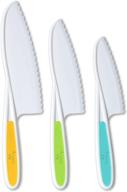

7 Review

Using Silipods for On-the-Go Meals
One of the biggest conveniences of Silipods is being able to take homemade baby food on-the-go without worrying about leaks or spills. Here are some tips for using Silipods for meals away from home.
Prep Ahead
Prepare batches of baby food in advance and portion into Silipods:
- Refrigerate what you plan to use within 3 days
- Freeze portions to be used later
Labelling each container with name/date helps identify contents.
Packing for Travel
When ready to head out, select the needed Silipods from the refrigerator or freezer and pack in an insulated bag or cooler with ice/cold packs to keep food chilled.
Bring any needed utensils, bibs, extra bottles, etc. Having all your supplies organized makes feedings away from home cleaner and easier.
Heating On-the-Go
If taking frozen Silipods, pack a thermos of hot water to heat them on-the-go. Place the chilled Silipod in the thermos for 5-10 minutes until warmed through.
You can also bring a portable bottle warmer. Heating times may take a few minutes longer than at home.
Wherever you end up feeding baby, inspect the Silipod before use to ensure no damage occurred in transit. With Silipods, homemade baby food stays fresh and feeding time is stress-free whether dining in or out!
Choosing the Right Silipod Size
Silipods come in a range of sizes perfect for serving homemade baby food. Selecting the right size ensures proper portioning as your little one grows.
Size Options
Silipods are available in these sizes:
- 1.5 oz - great for first foods
- 3 oz - ideal for fruits and veggies
- 5 oz - perfect for thicker purees and cereals
- 5 oz Mini Dip - easy self-feeding size
- 7 oz - larger portions for bigger appetites
Portion Guidelines
Use these general guidelines when selecting Silipod sizes:
- Age 4-6 months: 1.5-3 oz
- Age 6-8 months: 3-5 oz
- Age 9-12 months: 5-7 oz
- Age over 12 months: 5-7 oz
Adjust portions to your baby's needs and introduction of solid foods.
Consider Food Type
Think about the type of food as well. More liquidy purees fit better into smaller Silipods. Thicker foods and finger foods work well in the larger 5-7 oz sizes.
Having a variety of sizes on-hand makes storing and serving homemade baby foods simple. And Silipods grow with your child, easing transitions to solids and larger portions.
How To Clean Miniware Silipods Grey 2 Pack?
To clean Miniware Silipods Grey 2 Pack, follow these steps:
- Miniware Silipods are safe to clean in the dishwasher. Avoid using the heated dry feature if possible.
- If washing by hand, use warm soapy water and a soft sponge or brush to clean the containers.
- Rinse thoroughly with water and dry with a clean towel or let air dry.
- For tough stains or odors, soak the containers in a mixture of baking soda and water for a few hours before washing.
- Do not use abrasive cleaners or scrubbers that can damage the silicone material.
- Store the Miniware Silipods in a clean and dry place until the next use.
- With proper care and cleaning, Miniware Silipods can last for a long time and provide a safe and convenient way to store food for your child.
Can Miniware Silipods Grey 2 Pack Be Microwaved?
Yes, Miniware Silipods Grey 2 Pack can be microwaved. According to the product description on the manufacturer's website, the food-grade silicone containers are both freezer and microwave safe for easy food prep and storage. Additionally, the product listing on Amazon confirms that the containers are microwave safe. It is important to note that when microwaving, it is recommended to remove the lid to prevent any potential damage to the container or lid.





